Podcast
Show Notes
Magnetic field lines accent inner galaxy
- Northwestern press release
- “Statistical Properties of the Population of the Galactic Center Filaments: The Spectral Index and Equipartition Magnetic Field,” F. Yusef-Zadeh et al., to be published in The Astrophysical Journal Letters (preprint on arxiv.org)
Matter made from light
- U.S. DoE press release
- “Measurement of e+e− Momentum and Angular Distributions from Linearly Polarized Photon Collisions,” J. Adam et al., 2021 July 27, Physical Review Letters
Life found in the deep, hot subseafloor
- New research discovers surprising activity among organisms thriving in extremely deep, hot subseafloor (EurekAlert)
- “Rapid metabolism fosters microbial survival in the deep, hot subseafloor biosphere,” F. Beulig et al., 2022 January 25, Nature Communication
Origin of water: A new hypothesis has entered the chat
- Skoltech press release
- Mineral Candidates for Planet Interiors (Physics)
- “Ultrahigh-Pressure Magnesium Hydrosilicates as Reservoirs of Water in Early Earth,” Han-Fei Li et al., 2022 January 21, Physical Review Letters
Great Unconformity cause finally resolved
- Dartmouth press release
- “Thermochronologic constraints on the origin of the Great Unconformity,” Kalin T. McDannell et al., 2022 February 1, PNAS
This Week in Rocket History: STS-42
- STS-42 mission archive (NASA)
- STS-42 press kit (NASA)
- “The Role of Gravity in the Establishment of the Dorso-Ventral Axis in the Amphibian Embryo,” G.A. Ubbels, M. Reijnen, J. Meijerink, and J. Narraway, 1995 March, Biorack on Spacelab IML-1
China launches radar sat
- CASC press release
- China launches L-SAR 01A satellite for land observing (Xinhua)
Transcript
Hello and welcome to the Daily Space. I am your host Dr. Pamela Gay.
And I am your host Beth Johnson.
And we’re here to put science in your brain.
For decades, scientists have been trying to work out just how the Earth got all its water, and the prevailing theory was that comets and asteroids brought it, and we have evidence for that mechanic; however, a new hypothesis has provided evidence that the water was already here, locked away in hydrous minerals in a very iron-poor core.
Plus, magnetic fields, subatomic particles, life on the ocean floor, a geology mystery solved, and this week in rocket history covers a space shuttle mission with some really neat science.
All of that and more in today’s Daily Space.
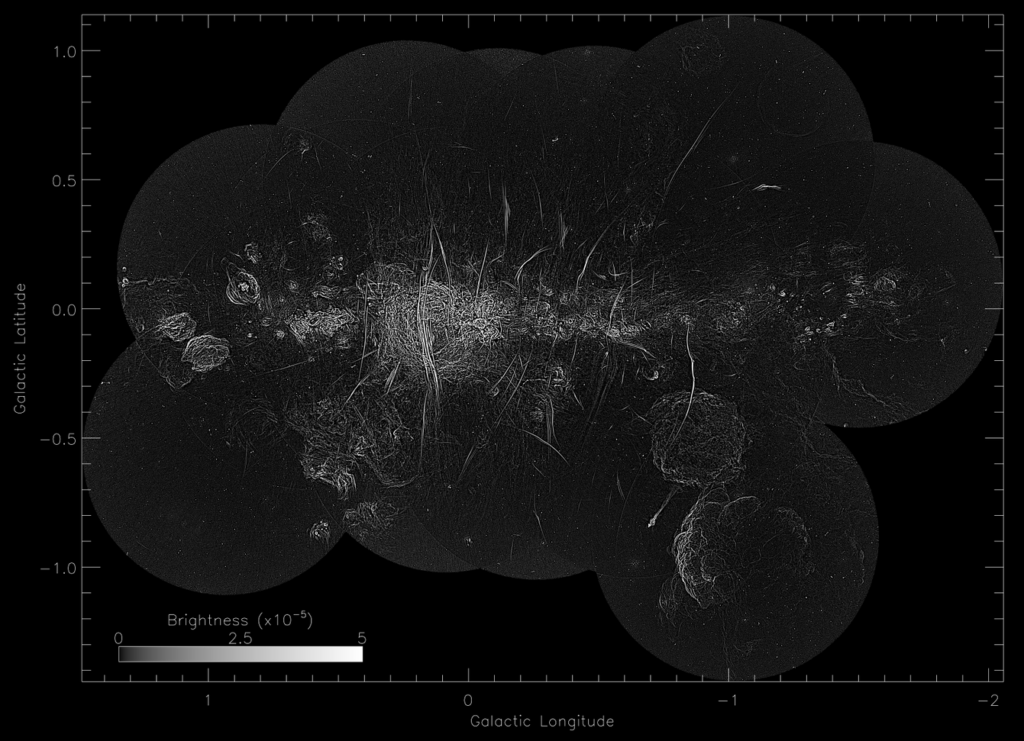
A recurring theme in astronomy is that each new telescope discovers new things we can’t understand. A lot of the current excitement about the JWST is because it will, if everything works, be a massive technological leap forward, and we know it is going to reveal things we haven’t been creative enough to imagine.
While the JWST’s technological leap is something like jumping from the electric cars of the late 1800s to a Tesla Model S, other areas of astronomy have taken a more iterative approach. In radio astronomy, engineers and scientists are working their way toward the next generation Square Kilometer Array – or SKA – by building and testing a series of smaller facilities that test all the needed technologies. One of these testbed facilities is MeerKAT in South Africa, and the data from this facility is showing stunning structures that we totally don’t understand, and mysteries like this are amazing.
In the early 80s, Farhad Yusef-Zadeh discovered radio bright filaments in the inner galaxy. These filaments mark the locations of magnetic field lines and glow from light emitted by high-energy electrons gyrating in the field. While early studies allowed the brightest filaments to be discovered, it took twenty observing sessions over three years with MeerKAT to show us just how many of these filaments are out there and how much we have to learn about them.
As Yusef-Zadeh puts it: We still don’t know why they come in clusters or understand how they separate, and we don’t know how these regular spacings happen. Every time we answer one question, multiple other questions arise. … We’re hoping to get to the bottom of it, but more observations and theoretical analyses are needed. A full understanding of complex objects takes time.
This data has allowed a few things to be understood: The strands stretch up to 150 light-years and can accelerate electrons to relativistic speeds. They seem to be associated with our galaxy’s central supermassive black hole.
I can’t wait to see what SKA allows us to see with this project when it starts making observations in 2024.
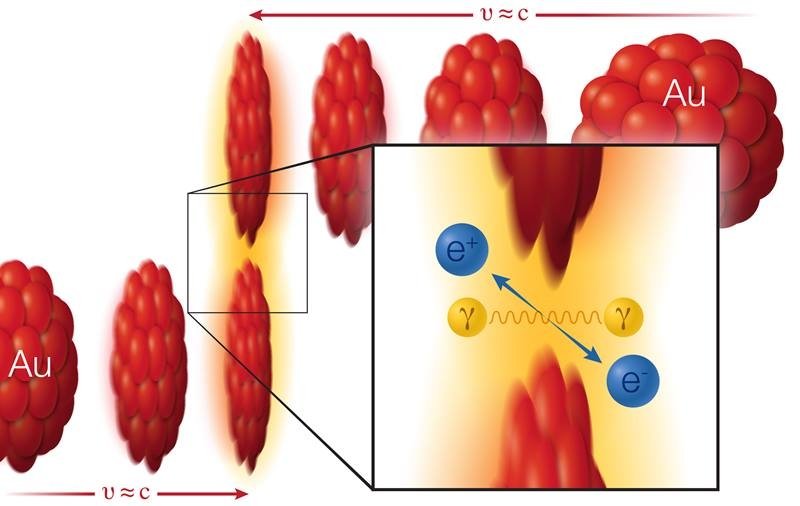
Ok, so, if you accelerate an electron in a magnetic field, you can make it generate light – radio light – but that is still light. This is your casual reminder that mass and energy are all interrelated. Thanks to the popularity of human-made facilities like the CERN accelerator in Europe and the stunning images of black hole-driven jets like those in active galaxies, we’re used to thinking about how accelerated particles can generate light, and in their collisions, sometimes even generate new particles. Slam two protons together hard enough and you can even find Higgs bosons in the resulting mess.
While slamming particles together to generate light and different particles is pretty standard, it should also be possible to slam beams of light together to get particles and different kinds of light. This possibility is called the Breit-Wheeler effect, and in 1934 it was predicted that collisions of photons could generate matter and antimatter. Unfortunately, testing this idea isn’t as simple as pointing two standard lasers into one another and watching for matter/anti-matter reactions where they collide.
It turns out that, to collide light, you have to first have a near-miss between heavy, charged atoms – ions – like ionized gold.
In a new paper in Physics Review Letters, researchers led by J Adam describe how photons associated with gold ions accelerated to near light speed were observed to produce electrons and positrons. This experiment was performed at Brookhaven National Lab and is an amazing demonstration of the precision of these instruments. Researchers literally accelerated streams of gold ions, moving in opposite directions, so that they grazed past each other in a way that allowed their surrounding photons to collide, and in the process, proved a 90ish-year-old theory.
Now, I want to go back to the firing lasers at each other idea. The reason that doesn’t work is that the photons in lasers just don’t have the needed energy. This kind of implies that if we someday do have lasers with photons of enough energy, we could try this experiment again with just the photons, but the photons that miss each other would be very dangerous, so let’s maybe not do that experiment.
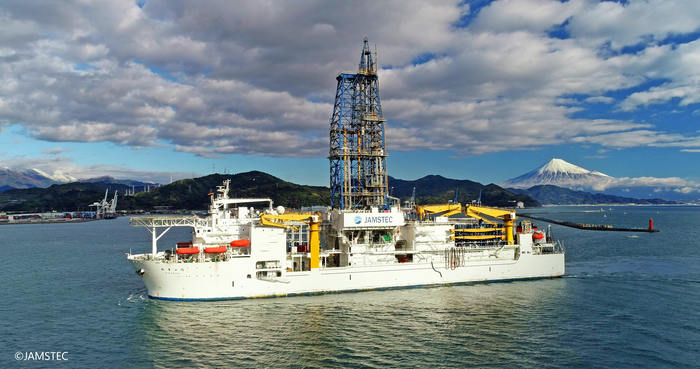
Here on Earth, we haven’t found a place too cold or too hot to have life, and our ability to find life just about anywhere is getting truly ridiculous.
In 2016, the Japanese scientific drillship, Chikyu, collected a column of material from the bottom of the sea at the subduction zone of the Nankai Trough. This is a place where the Philippine Sea plate is plunging under the Eurasian plate. Drilling 1.2 kilometers below the seafloor into materials reaching 120˚C, they found a small, active microbial community living where water would boil.
This work is described in a new paper in the journal Nature Communications. Lead author Felix Beulig explains how this is possible: We propose that the organisms are forced to maintain a high metabolic turnover, which approaches the activity of microbes living in surface sediments and in laboratory cultures, to provide the energy required to repair thermal cell damage.
Study lead Tina Treude adds: The energy required to repair thermal damage to cellular components increases steeply with temperature, and most of this energy is likely necessary to counteract the continuous alteration of amino acids and loss of protein function.
This fast metabolism is radically different from what has been seen before. Collaborator Bo Barker Jørgensen explains: We always found that microbes in the deep biosphere are an extremely sluggish community that slowly nibbles on the last remains of million-year-old, buried organic matter. But the deep biosphere is full of surprises. To find life thriving with high metabolic rates at these high temperatures in the deep seabed nourishes our imagination of how life could evolve or survive in similar environments on planetary bodies beyond Earth.
The longer I do science communications, the more I come to appreciate that some questions just don’t have good answers, and people are going to publish ideas – sometimes contradictory ideas – on a regular basis as we work toward answers.

Where is life? Where ever it feels like being, apparently. What is needed for life? Probably water or at least a solvent like water. Where does water come from? That is a very good question we can’t answer. Personally, I side with the researchers saying it came from impacting meteors and asteroids, but a new paper appearing in Physical Review Letters has another idea: water came to Earth from Earth.
How could that possibly work with a liquid metal core, asteroids constantly bombarding the planet, and even a collision with a Mars-sized object that led to the formation of the Moon? Well, it turns out that there actually wasn’t a liquid metal core. And so the water could have been locked up in magnesium hydrosilicate, which is over 11% water by weight and can also stably exists at pressures in excess of two million atmospheres and extremely high temperatures, such as in the Earth’s core. Co-author Artem R. Oganov explains: There was no core at the time. In the beginning of its existence, the Earth had a more or less evenly distributed composition, and it took the iron roughly 30 million years from when the planet formed to seep down to its center, pushing the silicates up into what we now call the mantle.
So all that potential water was safely stored deep below the heavily bombarded surface of Earth. Then the iron slowly crept down into the core, pushing all the silicates up, which broke down into the much more common magnesium oxide and magnesium silicates we see today — plus water. All of that became the mantle, and then the water spent the next 100 million years working its way to the actual surface of the planet, at a time when all the bombardment had slowed down and there was no longer a bunch of surface heat to evaporate the water.
One of the interesting side effects of this new hypothesis is that it can also be used to change our perspective on the origin of water on other worlds. Oganov notes: Mars, for example, is too small to produce pressures necessary to stabilize magnesium hydrosilicate. This explains why it is so dry and means that whatever water exists on Mars, it likely came from comets.
Or how about exoplanets? Co-author Xiao Dong explains: There was an estimate that for an Earth-like planet of any size to be habitable, it should have no more than 0.2% water by weight. Our results imply that for large Earth-like planets, called ‘super-Earths,’ the story is likely different: In such planets, pressures stabilizing the magnesium hydrosilicate must exist even outside the core, locking up large amounts of water indefinitely. As a result, super-Earths can have a much greater water content and still support the existence of exposed continents.
Water, water everywhere, and probably a lot to drink and from different sources than we originally thought.

Not only is water everywhere, but it has can have a massive effect on surfaces. As said in the Doctor Who episode “The Waters of Mars”, “Water always wins.” And it turns out, it can win in a big way.
One of the last remaining major mysteries of geology here on Earth is a gap in the rock record that covers hundreds of millions to billions of years and is seen across much of North America, including most notably the Grand Canyon. An unconformity is a place in the rock record where rocks of very different types rest on one another, particularly sedimentary rocks on other types, and they imply that some sort of massive change in the environment occurred.
In the case of the Grand Canyon and the Great Unconformity, sedimentary rocks are missing from between the basement rocks and volcanic and metamorphic rocks that date to about 1.2 to 1.6 billion years later. In some places, the missing rock only totals about 725 million years. And in new research published in the Proceedings of the National Academy of Sciences, scientists have determined that the missing sedimentary rocks were eroded by the melting and pulling back of three-to-five-kilometer-thick glaciers from the Cyrogeian snowball Earth period.
So Earth forms, gets bombarded; water rises from the core, water freezes, water melts, sedimentary rocks get eroded, and basement rock gets revealed. There you have it. History is much bigger than just the last few hundred years or so, isn’t it?
This Week in Rocket History
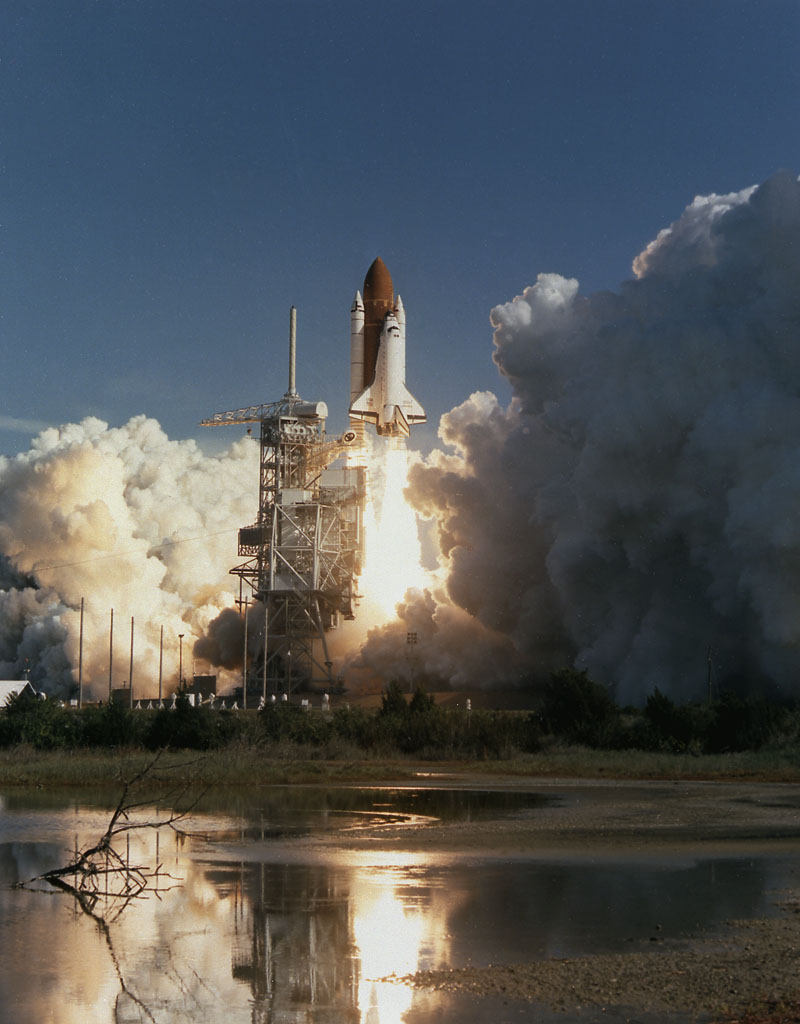
This week in rocket history, we present STS-42, a space shuttle mission full of cool science and the flight of the first Canadian woman in space.
STS-42, also called International Microgravity Laboratory 1, launched on January 22, 1992, with shuttle Discovery launching from pad 39A in the morning. STS-42 was Discovery’s fourteenth flight into space. It was delayed an hour off of its original time because of the weather.
The main purpose of the STS-42 mission was not to dock with a station or deploy a satellite but to do microgravity science using the Spacelab, a pressurized module carried in the shuttle’s payload bay. Spacelab provided more room for doing science in the relatively cramped shuttle. Spacelab was built by ESA in exchange for flying member state astronauts on the shuttle. STS-42 included two such astronauts in its seven-member crew: Ulf Merbold, the second German in space, and Roberta Bondar, the first Canadian woman.
Once in orbit, the crew split into two teams, Red and Blue, so that they could do science 24/7 during the relatively short eight-day mission. The shuttle stabilized itself on-orbit using the gravity gradient method instead of reaction wheels or thrusters, to provide the best environment for the microgravity research. The principal focus of the research was “the human nervous system’s adaptation to low gravity and the effects of low gravity on other lifeforms”. These other lifeforms included shrimp and fruit fly eggs.
Astronauts also conducted two experiments from high school students.
Because the Shuttle was in low-Earth orbit, the scientists in charge of the various experiments were just a voice or video call away and able to answer questions from the astronauts about how to do the experiment properly during the mission. The astronauts got months of mission-specific training before launch, but microgravity always complicates things.
One of the more interesting experiments involved seeing how developing frog embryos would change in microgravity. Specifically, they were looking for if the place the egg was fertilized would affect the orientation of the developing animal. In gravity, the fertilization point always became the front of the animal. Astronauts fertilized the eggs in space. The control and experiment samples were both done in space thanks to a centrifuge in the Spacelab module that provided approximately Earth gravity.

After the flight, the two samples were compared, and the scientists concluded that gravity was not necessary for the formation of the dorsal and ventral axes in embryo development and that the tadpoles’ development was otherwise normal. However, the scientists weren’t able to determine conclusively if the fertilization point alone determined the symmetry in microgravity.
Discovery also carried several secondary payloads, “Get Away Specials” (GAS), in the payload bay ahead of the Spacelab module. Ten of these canisters were on STS-42, including the first GAS payload from China. Another of the experiments was an ultraviolet telescope from an Australian company.
In addition to experiments, the astronauts also filmed their activities with a big IMAX 70-mm film camera for the movie Destiny in Space which was released in 1994. The film also featured footage from many more shuttle missions beyond STS-42.
Seven days into the mission, the astronauts packed up all the science and prepared the orbiter for return to Earth on flight day eight. The landing was accomplished at Edwards Air Force Base in California because the runway at KSC could not support the heavier landing weight of the shuttle returning with a Spacelab in the payload bay.
After landing, Discovery was flown back to Florida on the 747 shuttle carrier aircraft for a significant maintenance and upgrade period which would prepare it for missions to the International Space Station. It would go on to fly 25 more times before its retirement in 2011, the most of any Orbiter vehicle.
Statistics
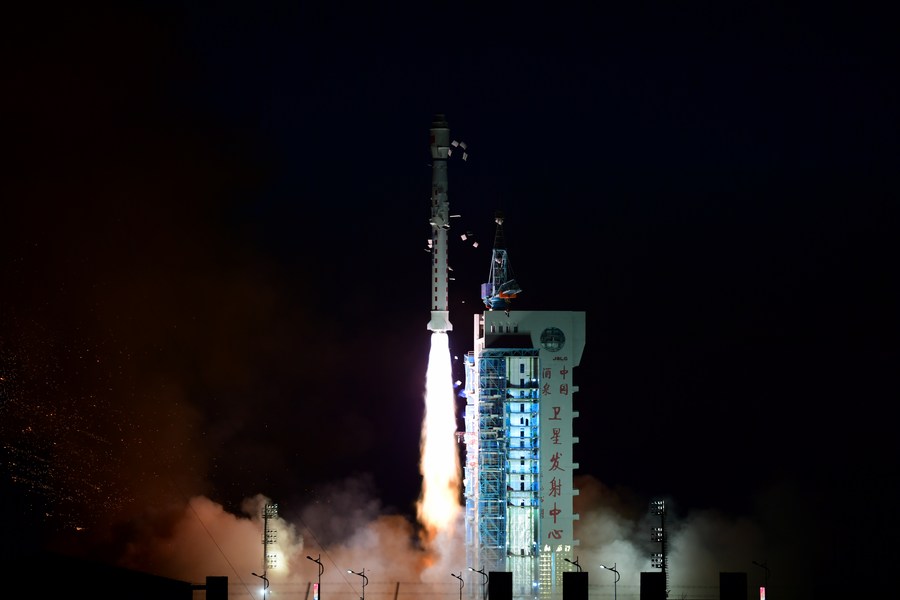
Before we get to our statistics, we do want to mention one rocket launch that snuck in under the wire. A Chinese Long March 4C launched the L-SAR 01A satellite into orbit on January 25 at 23:44 UTC from the Jiquan Satellite Launch Center in China.
And now, for some statistics.
The number of toilets in space is still eight: four on the ISS, one on the Soyuz, one on the Crew Dragon, one on Shenzhou 13, and one on Tianhe.
We keep track of orbital launches by launch site, also called spaceport. Here’s that breakdown:
USA 5
China 2
From those seven launches, a total of 215 spacecraft were put into orbit.
This has been the Daily Space.
You can find more information on all our stories, including images, at DailySpace.org. As always, we’re here thanks to the donations of people like you. If you like our content, please consider joining our Patreon at Patreon.com/CosmoQuestX.
Credits
Written by Pamela Gay, Beth Johnson, and Erik Madaus
Hosted by Pamela Gay, Beth Johnson, and Erik Madaus
Audio and Video Editing by Ally Pelphrey
Content Editing by Beth Johnson
Intro and Outro music by Kevin MacLeod, https://incompetech.com/music/


 We record most shows live, on Twitch. Follow us today to get alerts when we go live.
We record most shows live, on Twitch. Follow us today to get alerts when we go live.